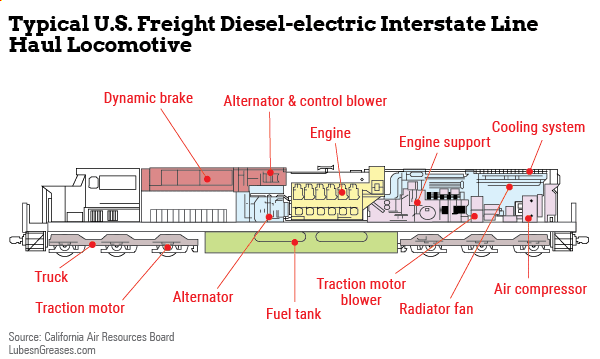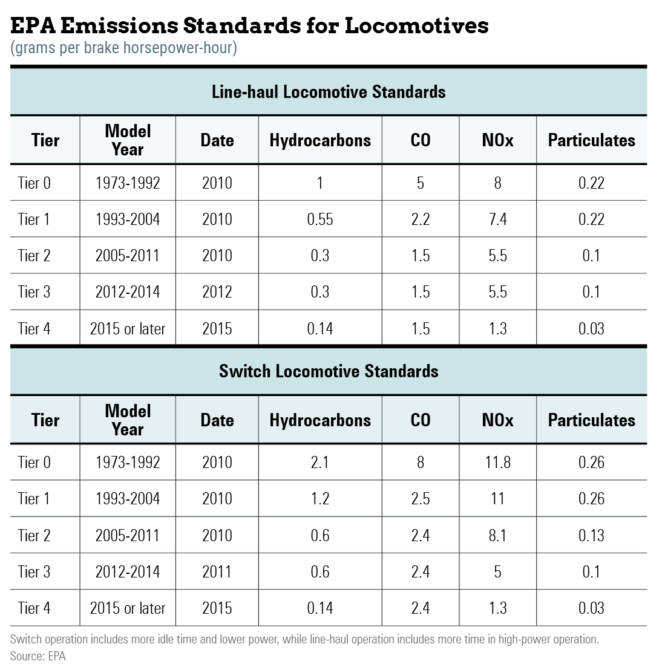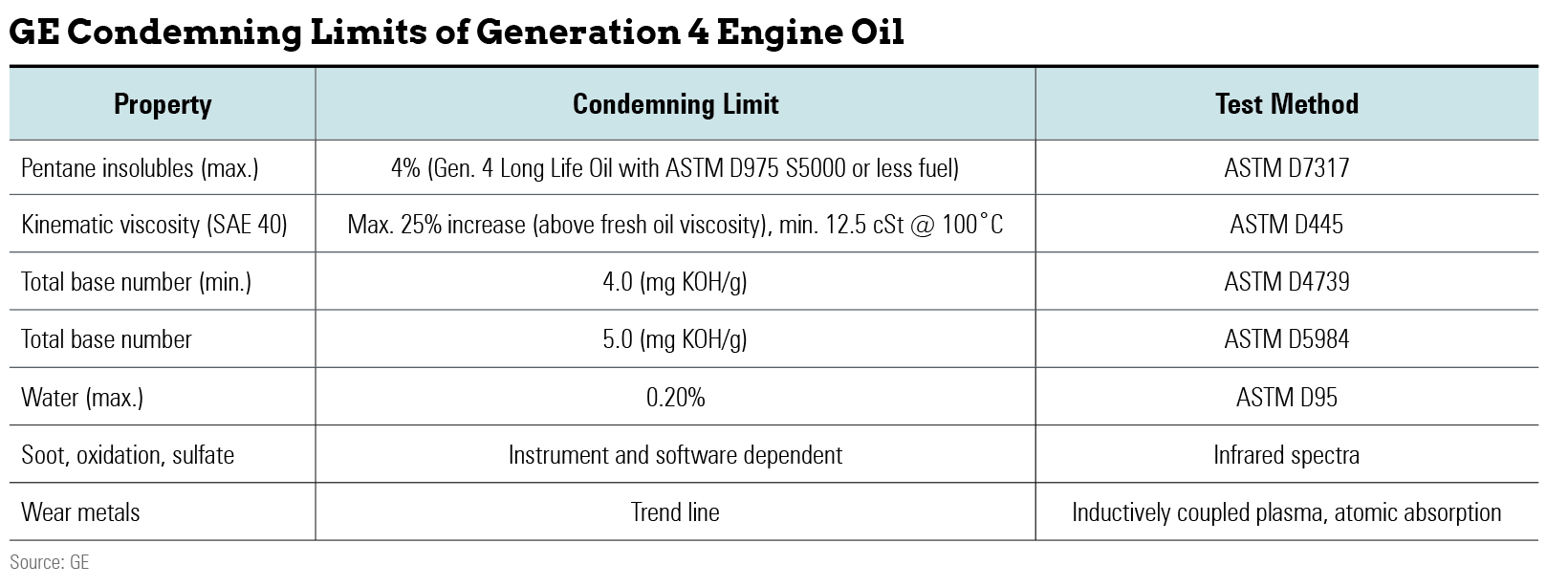
Since the first steam trains of early 19th century England, locomotives have been an invaluable boon to trade and civilization. While the rise of air and automotive transportation has significantly lessened the dominance of railroads in the transportation sector, it still remains a critical mode for many industries and continues to grow and change to match the needs of continuously advancing economies.
Locomotives can make use of direct electricity or a diesel engine as a primary source of power. For electric models, direct current from an electric line powers traction motors that drive the locomotive. In diesel locomotives, a diesel-fueled engine typically drives a generator, and the electricity from that generator is used to power the traction motors. Both electric and diesel locomotives are used internationally.
Major manufacturers of locomotives around the world include GE Transportation, which was spun off and bought by Wabtec in 2019, and Caterpillar’s Progress Rail, with its EMD brand, both based in the United States; Siemens Mobility and Alstom, which acquired Bombardier Transportation in January, are based in Europe. GE and EMD make diesel locomotives, while Siemens and Alstom make electric locomotives. China’s CRRC Corp. and Indian Railways are state-owned companies that make both diesel and electric locomotives.

While passenger rail is far less popular in the United States than other regions, about a third of U.S. freight is transported by rail, according to the Department of Transportation.
Locomotive transport brings environmental benefits. For example, rail produces up to 75% less greenhouse gas emissions than hauling equivalent freight by truck, according to the Association of American Railroads. However, this does not make rail immune to environmental regulations, and all locomotives in the U.S. must adhere to strict emissions standards and specifications outlined by the Environmental Protection Agency.
The first emission standards for locomotives were mandated by the EPA in December 1997, with gradually stricter standards organized by a system progressing from Tier 0 to Tier 4. Since coming into effect in 2015, Tier 4 standards have limited emissions of particulate matter, total hydrocarbons, nitrogen oxides and carbon monoxide. To meet these demands, technological advancements in numerous areas have been sought to maximize fuel efficiency and minimize engine idling.

Diesel Engine Oil Trends
One of the most obvious areas of improvement is the performance of the engine at the heart of diesel locomotives. These locomotives can typically generate 1,200–6,000 horsepower; most of the GE and EMD locomotive engines are rated at 4,500 HP. To keep such powerful engines running smoothly, engine oil must lubricate the piston rings and liners, connecting rod and main bearings, the valve train, and in locomotive engines, the turbocharger bearings as well.
In addition to lubricating, the engine oil must cool and maintain engine cleanliness by washing away combustion byproducts and deposits, while also neutralizing acidic combustion products such as sulfuric and nitric acids. Formulations generally include detergent, dispersant, antiwear, antioxidant, viscosity index improver and pour point depressant additives.
Railroad engine oils have traditionally been zinc-free because EMD engines had silver wrist-pin bearings that could be damaged by zinc-containing additives such as zinc dialkyldithiophosphate. GE engines did not use silver bearings, but railroads did not want to stock two different engine oils, and zinc-free oil became the standard. Although EMD stopped using silver in their bearings in the early 2000s, the zinc-free oil standard continued to protect the legacy fleet and remains a part of the industry today. Major additive companies such as Chevron Oronite, Afton and Infineum still cater to this requirement.
Oil performance level is classified by generation numbers 1–7 with specifications decided upon and approved by the Locomotive Maintenance Officers Association. Though a North American organization, LMOA generations are used around the world to specify railroad diesel engine oils. The most recent LMOA Generation 7 engine oil specifications have been established to comply with EPA emissions regulations for Tier 4 locomotive engines.
SAE 20W-40 viscosity oil is typically used in locomotive engines. Depending on the sulfur content in the fuel, locomotive engines use oils with total base number of 9–13, which is essential to neutralizing the sulfuric and other acids formed during combustion. Generation 7 oils typically have TBN of 11 as determined by ASTM D2896 and are the standard in North America, while Generations 7, 6 and 5LL have been used in other countries.
In comparison to Generation 6 oils, Generation 7 offers superior base retention and acid control and can better withstand the additional stresses of exhaust gas recirculation systems and reduced oil consumption in GE Evolution Series Tier 4 engines, all while maintaining compatibility with low sulfur (less than 500 parts per million) and ultra-low sulfur (under 5 ppm) fuels. Such improvements are expected to continue for future locomotive engine oils if emissions regulations grow stricter and further performance gains are developed.
As with automotive engine oils, potential exists within the railroad industry to move toward synthetics. However, similar levels of synthetics may be too expensive for many of the older locomotives. The older generations of diesel engines have very high oil consumption compared to a typical car or truck. Nevertheless, it may be worth trying synthetic oils in newer locomotives, which would enable longer oil drain intervals, better fuel economy and improved engine durability.
Another trend in the automotive industry is the move toward lower-viscosity engine oils. It is certainly an uphill task for the railroad industry to move down the viscosity scale due to the mix of older and newer locomotives in many fleets, but the potential for greater fuel economy alone makes it worth exploring in newer equipment.
Based on the success of lower-viscosity automotive engine oils, an improvement of 2% to 3% in fuel economy for locomotive engine oils should be achievable. For railroads, such improvements would save millions of dollars, as fuel is the major component of total operating cost, estimated at $12 billion annually. While moving from SAE 20W-40 to SAE 5W-30 may require redesigning some of the engine components, the quest for reduction in carbon dioxide emissions might necessitate such changes in the future.
Routine maintenance practices typically call for locomotive engine oil to be changed every three to six months. Intervals can be shorter or longer depending on the service category and type of railroad and could also be influenced by numerous factors such as TBN depletion, high soot content, fuel dilution and oil oxidation. As a result, GE’s guidelines recommend testing in-service oils every 7 to 10 days under programs that analyze the properties shown below.

Gears and Greases
A separate but equally essential area of lubrication is the electric traction motors and gear boxes that the engine powers. Locomotives typically have four to six traction motors that drive the wheels and are connected to the drive axle through a gearbox utilizing pinion and bull gears. These can be powered through AC or DC drives, although AC drives have become more popular for greater traction control and reduced maintenance.
As with any other mechanical component, lubricant is applied to minimize wear, reduce friction and improve performance. For locomotives, the traction motor gear oil also lubricates the main bearings and is typically a polyalphaolefin based oil with ISO Viscosity Grade 460 with mild extreme pressure and antiwear additives. In fact, GE specifies lubricants containing PAO base stock for recent AC traction motors.
Formulators avoid using active sulfur-phosphorous EP additives in these oils due to their potential to damage the yellow metals (bronze, brass, etc.) used in many bearing components. Synthetic gear oil enables oil drain intervals of about two years depending on the type of service and how well the gearbox is sealed from dust and other contaminants. Other factors that may shorten service life include oil oxidation and contamination by water or insoluble contaminants. Hence, oil monitoring is as important here as for engine oil.
Just as automotive engine oil advancements can inform formulation of locomotive engine oils, the railroad industry can benefit from lessons gained from using lower-viscosity oils to improve efficiency in wind turbine gearboxes.
Another critical area for lubrication is the air-brake systems used in most locomotive units for both stopping and emergency braking. These may have a reciprocating or rotary screw design, but in either case employ an air compressor to generate pressurized air that is fed into the brake system.
Typically, a highly refined mineral oil based lubricant of ISO VG 68 or 100 with some antiwear and antioxidant additives is used in the compressor. Recent GE specifications D6B31A1 and D6B31B1 instead use synthetic diester base stock or a PAO-ester blend. Depending on the type of service, it is usually recommended for compressor oils to have a drain interval of one year since oxidation and contamination can cause lubricant deterioration beyond that period.
While oils are used for a variety of locomotive lubrication systems, greases lubricate the bearings in the main generator, traction motors, U-tube bearings, radiator fans and wheel bearings. These bearings are different sizes, take different loads and rotate at various speeds, so they each require greases with compositions optimized for the specific application and environment.
Typically, traction motors use an NLGI Grade 3 lithium grease made with mineral oil, while U-tube bearings need NLGI Grade 2 under GE Specification D50E34 and D6A2C17, respectively.
Wheel bearing and generator greases are also preferably synthetic, with choice depending on the desired service life and ambient conditions such as seasonal temperature.
Lubricants with performance specifications and material composition optimal for their specific operating environment play a crucial role in ensuring various locomotive components run smoothly and efficiently. Demand for lower operating costs and a minimal environmental footprint compels industrial sectors such as the locomotive industry to seek improvements through any means necessary, and locomotive lubrication will be a key component of achieving those goals for the foreseeable future.
Raj Shah, Ph.D., is a director at Koehler Instrument Co. and an elected fellow of STLE, IChemE and the Energy Institute. Contact him at rshah@koehlerinstrument.com.
Najeeb Kuzhiyil is a staff engineer at ExxonMobil Corp. and was previously a senior engineer at General Electric Co. An expert in fuels, lubricants and engine combustion, he holds a Ph.D. in biorenewable resources and technology from Iowa State University.
John Calderon is a student of chemical engineering at Stony Brook University and an intern at Koehler Instrument Co.